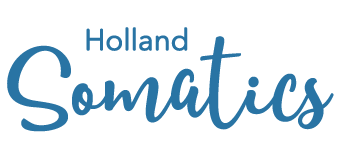Could Over-Exercising be a Cause of Back Pain?
I read a recent WSJ article entitled, “How Much Work Can the Back Do Without Strain?” in which Dr. Kee Kim, chief of spinal neurosurgery at UC Davis talked about how to work with your back and not go overboard.
The article starts with some serious stats on back pain in America. Would you believe 80% of American adults complain of back pain? I knew it was high, but that’s epidemic proportions! If you think about it for a moment, you can probably name several people in your life who have suffered from this debilitating pain at some point. And, many get stuck in the pain med cycle, wishing there was another answer, as the side effects over time can be just as bad in their own way as the pain itself.
In our tech-driven country, how can it be that only 20% of American adults are not suffering from this pain? Are they just lucky?
Here is what Dr Kim advises to avoid back pain:
- Don’t slouch forward (adds twice as much strain on disks)
- If overweight, lose weight
- He mentioned a study that said 40% of manual laborers have back pain vs. 18% of sedentary workers
- You need strong muscles supporting the spine
- A general rule of thumb is that a fit person should be able to carry one-third of his body weight, as long as it’s balanced evenly
- Doing lifting exercises can do more harm than good, heavy weight lifting can require hyperextension of the back, putting a lot of stress on the disks
Overall, Dr. Kim’s final advice is:
“But most people can avoid chronic back pain or at least decrease it by elevating core strength and working on their posture.”
After reading this, I decided to do a little research to find out what American’s are doing fitness-wise. Based on this data, it doesn’t look like American’s are sitting around on their couches.
# of tennis players in US in 2014 – 12.29 million
# of soccer players in US in 2014 – 13 million
# of bike riders/cyclists in US in 2014 – 67.33 million
# of people practicing yoga in US in 2014 – 20.4 million
# of hikers in US in 2012 – 34.5 million
# of runners in US in 2013 – 19 million
# of people practicing Pilates in US in 2014 – 11 million
# of health club memberships nationwide in 2012 – 50 million
Add these up, and you get 227.5 million instances of partaking in these forms of exercise. Of course this is not scientific, just a rough estimate based on web searching and there’s bound to be overlap across sports. By the way, the estimated US population in 2015 is 321,163,157. Doesn’t it look like there is a lot of exercising going on across the US? What about the burgeoning field of Sports Medicine? It’s not just for pro-athletes anymore.
How does this data jive with the 80% back pain in American adults? Could there be too much strength-building going on across America? Are people increasing muscular tension so much that they are hurting themselves while trying to get fit? How much does slouching in front of the computer add to the back pain problem?
I can tell you that in my practice, I’ve more than a few people break down and cry after realizing how much they have contributed to their own pain from over-exercising, thinking it was the healthy thing to do. “Just Do It,” right?
In my work, I see a lot of core confusion. People really don’t understand what the core does and how it supports the body’s movement. They often prefer to bulk up first. I will explore this line of reasoning in my next blog post – Core Confusion.




